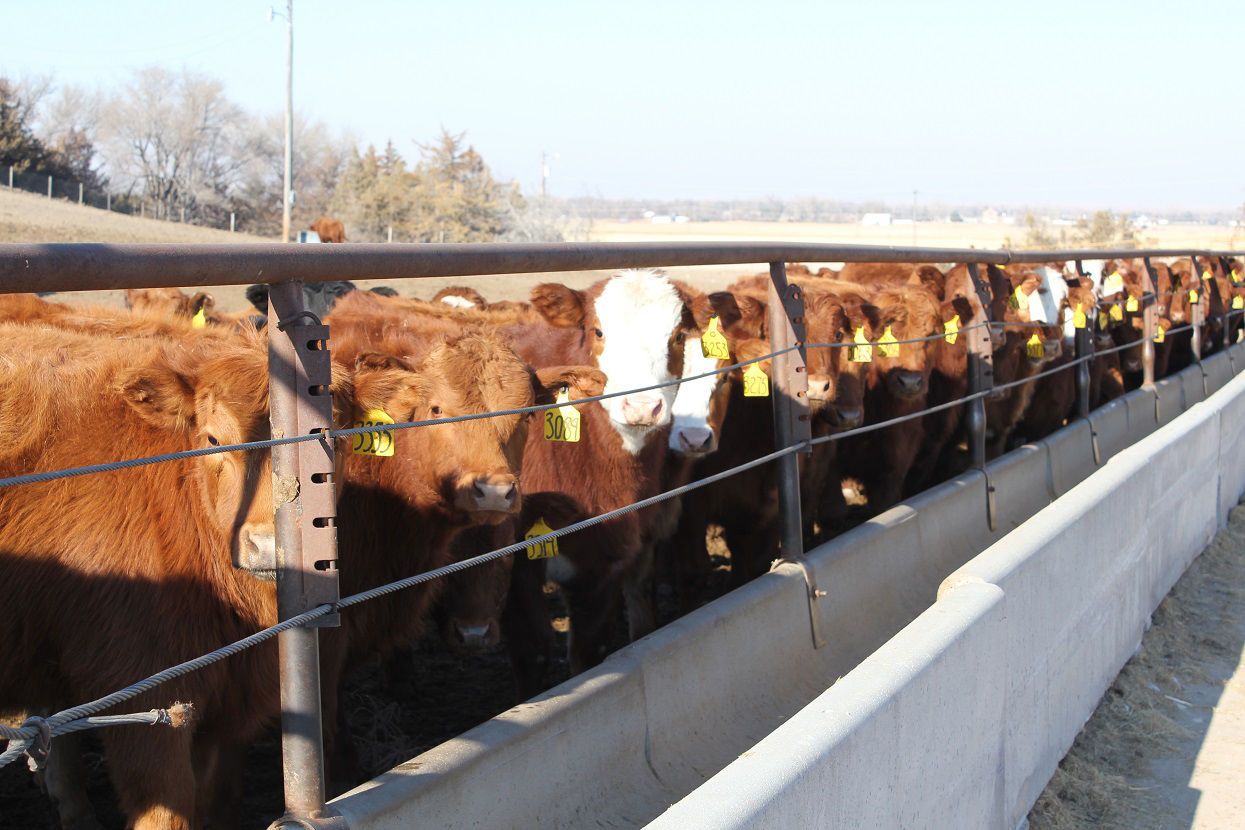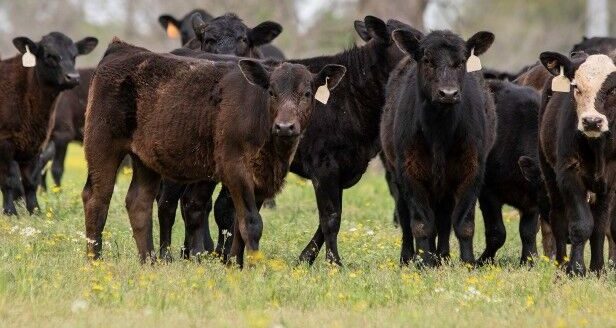Weaning season is right around the corner for producers. However, some producers do not think about how their management techniques can affect calves when entering the feedlot. These techniques can affect how calves are managed when received at the feedlot and subsequently, can determine the number of head in a pen during receiving. This article will review the difference in bunk space requirements between calves that are weaned and shipped immediately to a different location compared to calves that are preconditioned before entering the feedlot. Preconditioning is defined by calves that are vaccinated, have a nutritional background, and have had time to adjust to weaning before being shipped to a new location.
Time to adjust
There are multiple ways to ease stressors on calves before entering the feedlot. One practice is waiting a week or longer after weaning before moving the calves to a new location or sale barn. This allows calves to adapt slowly to changes. Allowing calves time to adjust after weaning before moving locations is called “precondition.”
Additionally, limiting the number of calves in small groups helps ease the transition to group housing. By limiting the number of head, calves are allowed to adapt to the social interactions of group housing. This can decrease a calf’s stress level. This strategy can be translated into a feedlot as well, because calves need time to adapt to a new location and new calves in a pen.
Pathogens
Another concern to be aware of is pathogens. Pathogen loads could vary in preconditioned calves’ versus weaned calves. Preconditioned calves could potentially have a built up immune system against pathogens because of the social interaction prior to entering the feedlot. Weaning, change of diets, transportation, and change of housing can all be stressful events for calves, thus suppressing the immune system which weakens its ability to fight pathogens present in feedlots.
Rumen development
Rumen development cannot be overlooked while a calf is being weaned. Rumen development is extremely important for calf health because it takes 4 to 6 months before the rumen is completely developed. Feeding high starches (grains) can increase the rate of rumen growth and development. Calves that are preconditioned could potentially have had access to long stem forages and grains which would aid in gut health. The calves that have access to forages or grains could also potentially be bunk broke because the dams may have taught the calves what is in a feed bunk. This can also affect bunk space in a feedlot for calves that are preconditioned or weaned.
Bunk space
The issues listed above, can affect the number of calves in a pen at a feedlot. According to Harner and Murphy, the recommended bunk space for backgrounding feedlots (500 to 700 lb calves) is 18 inches per head. Younger cattle are more likely to eat together which requires more bunk space compared to finishing cattle. However, one needs to consider the differences in bunk space for preconditioned calves and weaned calves in a feedlot. Finishing cattle have a bunk space of 9 to 12 inches per head. These differences in bunk space are due to the factors described above.
Water
Water consumption is another factor that can aid in calf health. Cattle can consume 8 to 20 gallons per 1,000 pound animal unit. This will vary depending on the weather and time of the year. Having fresh clean water for calves is important for rumen development. Calves should have unlimited clean water at all times.
Conclusion
Bunk space can vary depending on if calves were preconditioned or not prior to entering the feedlot. If calves are preconditioned, they have been exposed to group housing and can have a more tolerable immune system compared to the calves that were weaned and sent to a sale barn then to the feedlot. If calves are bunk broke, vaccinated, and have had social interactions prior to entering the feedlot this can result in more head in a receiving pen. On the contrary, calves that are weaned and sent to a sale barn without preconditioning, and are not familiarized with social interactions, could require more bunk space in a receiving pen.
For more information or assistance, please contact Mariah Woolsoncroft, Nebraska Extension in Nance/Boone County by phone at 308-536-2691 or email [email protected].



